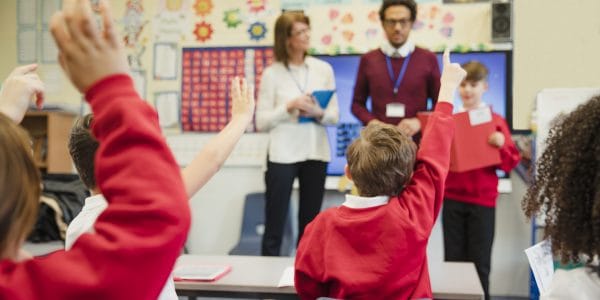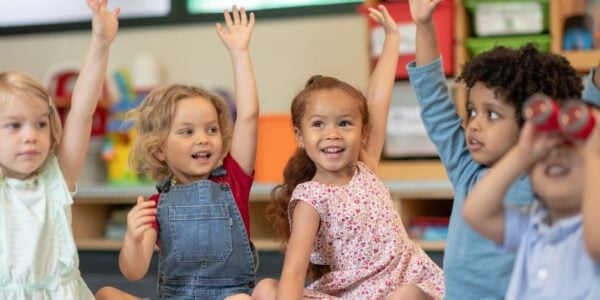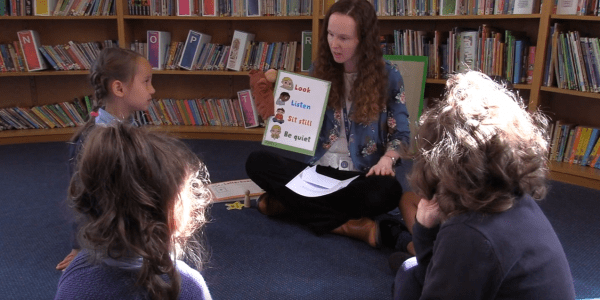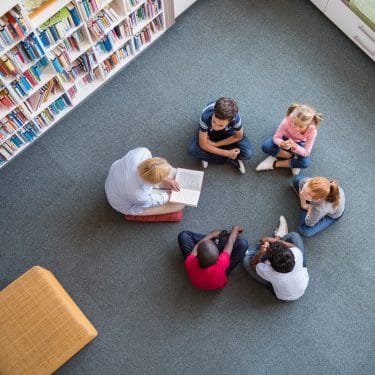Up to 2018/19, the Welsh school system was facing a substantial and growing challenge of ensuring there were sufficient numbers of teachers. This is according to NFER’s annaul report of teacher labour market, funded by the Nuffield Foundation.
The team used government school census data on teacher recruitment and retention, from before the COVID-19 pandemic. The report highlights that the recruitment and retention challenge is most acute in secondary schools, in shortage subjects (such as Welsh, maths, science and modern foreign languages), in Welsh-medium schools and in schools in areas with high levels of disadvantage.
Headline findings in the report include:
Primary and secondary pupil-teacher ratios rose in Wales in 2018/19
The number of teachers in Welsh primary and secondary schools has declined compared to 2009/10 levels, in line with pupil numbers at secondary level but while primary pupil numbers have increased. The secondary school sector faces a substantial challenge in light of an expected increase in pupil numbers over the next five years. A continued decline in teacher numbers could lead to increasing pupil-teacher ratios, and potentially teacher shortages, in the future. In contrast, the number of primary school pupils is projected to fall.
Entries to initial teacher education have been below target for three years in a row
The number of trainees recruited to secondary inital teacher training has fallen steadily between 2010/11 and 2018/19, and has increasingly been below target since 2013/14. Recruitment to inital teacher training has worsened across most secondary subjects, including modern foreign languages (MFL), Welsh, science and maths. Recruitment to English and Geography inital teacher training, subjects that usually have high entries to inital teacher training, was just below half of the target in 2018/19. The number of primary inital teacher training entrants has also fallen slightly below target since 2015/16, with a further decline in 2018/19.
Secondary schools appear to be finding recruitment increasingly challenging
The average number of applicants per vacancy in secondary schools has fallen from more than 12 in 2011/12 to less than seven in 2018/19. Over the same period the proportion of vacancies that are unfilled has increased from 2% to 11%. A lower number of applicants is likely to adversely affect the chances of senior leaders receiving suitable candidates, and of making an appointment.
Welsh and bilingual schools face a greater teacher recruitment challenge than English-medium schools
English-medium schools had a higher average number of applicants per vacancy than Welsh and bilingual schools between 2009/10 and 2018/19. For primary schools, the rate of teachers leaving the profession has also been slightly higher for bilingual and Welsh-medium schools relative to English-medium schools. A challenging recruitment environment for bilingual and Welsh medium schools is likely to be hindering the Welsh government’s ambition to expand Welsh-medium education (Welsh in education, Action plan 2017-21). However, this may change in the years ahead as a result of the actions set out by the government’s strategy.
Schools in disadvantaged areas find it more challenging to fill vacancies
Between 2009/10 and 2018/19, schools in disadvantaged areas had higher proportions of vacancies that were unfilled compared to those in less disadvantaged areas. Further, secondary schools in more disadvantaged areas experienced a higher teacher leaving rate. This suggests that the teacher shortages faced by schools in disadvantaged areas are more acute, particularly for secondary schools. Persistent disparities in teacher recruitment and retention may exacerbate existing inequalities in educational outcomes between children from different backgrounds. This calls for government action that supports schools in disadvantaged areas to attract and retain high-quality teachers.
Report author and School Workforce Lead at NFER, Jack Worth, said:
“Ensuring there are enough high-quality teachers in schools across Wales is crucial for delivering a first-class education for young people. The findings raise concern that a continued decline in teacher numbers could lead to increasing pupil-teacher ratios, and potentially teacher shortages, in the future.
“While the COVID-19 pandemic may help to ease teacher supply in future, as more people decide to enter teaching and more teachers decide to remain in the profession, this report highlights the underlying challenge facing schools.”
Cheryl Lloyd, Education Programme Head at the Nuffield Foundation, added:
“Whilst we welcome the Welsh government’s recent commitment to recruiting 600 teachers during the next academic year, this new research from NFER highlights the challenge of recruiting teachers to shortage subjects in Welsh speaking, bilingual schools and those in disadvantaged areas.
“To avoid exacerbating existing inequalities in student attainment, teaching staff must be recruited to schools where they are needed most. An additional challenge is the retention of existing teachers. As previous research from NFER has shown, incentives such as shorter working hours and part-time working may help retain teaching staff.”



















































